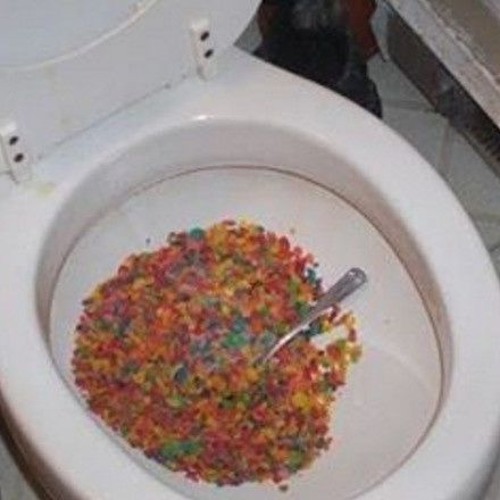Is it Safe to Dispose of Food in the Toilet?
Is it Safe to Dispose of Food in the Toilet?
Blog Article
On this page on the next paragraphs you will discover a lot of professional insight relating to Is it safe to flush food (especially rice) down the toilet?.

Introduction
Many individuals are usually confronted with the predicament of what to do with food waste, especially when it comes to leftovers or scraps. One common inquiry that develops is whether it's fine to flush food down the bathroom. In this article, we'll explore the reasons people could consider purging food, the repercussions of doing so, and different approaches for appropriate disposal.
Reasons that individuals might think about flushing food
Lack of awareness
Some individuals may not understand the prospective damage brought on by flushing food down the bathroom. They might wrongly believe that it's a safe practice.
Ease
Purging food down the bathroom may look like a fast and easy option to dealing with undesirable scraps, especially when there's no neighboring garbage can readily available.
Laziness
Sometimes, people might merely choose to flush food out of sheer idleness, without thinking about the consequences of their activities.
Repercussions of flushing food down the toilet
Environmental impact
Food waste that winds up in waterways can add to pollution and damage aquatic ecosystems. Additionally, the water utilized to purge food can stress water sources.
Pipes concerns
Flushing food can bring about stopped up pipelines and drains pipes, causing costly pipes repairs and hassles.
Sorts of food that must not be flushed
Coarse foods
Foods with coarse textures such as celery or corn husks can obtain tangled in pipelines and cause clogs.
Starchy foods
Starchy foods like pasta and rice can absorb water and swell, bring about blockages in pipelines.
Oils and fats
Greasy foods like bacon or cooking oils need to never ever be purged down the toilet as they can strengthen and cause blockages.
Appropriate disposal approaches for food waste
Making use of a waste disposal unit
For homes outfitted with waste disposal unit, food scraps can be ground up and purged through the plumbing system. Nonetheless, not all foods appropriate for disposal in this way.
Recycling
Certain food product packaging products can be reused, lowering waste and reducing ecological effect.
Composting
Composting is a green way to throw away food waste. Organic materials can be composted and used to improve soil for gardening.
The relevance of proper waste monitoring
Lowering environmental harm
Correct waste monitoring methods, such as composting and recycling, assistance lessen pollution and maintain natural deposits for future generations.
Protecting pipes systems
By preventing the method of flushing food down the commode, home owners can protect against costly plumbing repair work and preserve the honesty of their plumbing systems.
Final thought
In conclusion, while it might be tempting to flush food down the commode for comfort, it is necessary to recognize the prospective effects of this action. By adopting proper waste monitoring techniques and disposing of food waste responsibly, people can add to much healthier plumbing systems and a cleaner setting for all.
FLUSH FOOD DOWN THE TOILET?
FLUSHING FOOD CAN CAUSE BLOCKED DRAINS IN YOUR HOME
All of the plumbing fixtures in your home are connected to the same sewer pipe outside of your home. This outdoor sewer pipe is responsible for transporting all the wastewater from your home to the Council sewer mains. Even small pieces of food that go down the kitchen sink can cause problems for your sewer. It should therefore be obvious that flushing larger bits of food, such as meat, risks a clog in either the toilet itself or the sewer pipes. Flushing greasy food is even more problematic because oil coagulates when it cools, coating the interior lining of your pipes.
THE TOILET IS NOT A BIN
Food isn’t the only thing that people shouldn’t be flushing down the toilet. People use the toilet to dispose of all kinds of things such as tampons, makeup wipes, dental floss, kitty litter and even underwear. Water goes to great lengths to educate residents about the high costs and stress placed on wastewater treatment systems simply from people flushing the wrong stuff down the toilet. It costs taxpayers millions of dollars each year, and homeowners thousands in blocked drain repairs.
FLUSHING FOOD IS A WASTE OF WATER
Flushing food is a waste of our most precious resource - water. In June this year Level 1 water restrictions were introduced to protect water supply from drought conditions. Much of New South Wales continues to be affected by prolonged drought with recent figures revealing up to 97 per cent of the state remains in drought. Depending on whether you have a single or dual flush toilet, every single flush uses between five and 11 litres of water. In the current climate this is a huge amount of water to be wasting on flushing food that should be placed in the bin (or better yet, the compost).
https://www.jabplumbingsolutions.com.au/blog/can-you-flush-food-down-the-toilet

I'm very excited about What Can Happen If You Flush Food Down the Toilet? and I'm hoping you appreciated my blog entry. In case you enjoyed our page please don't forget to pass it around. I appreciate reading our article about What Can Happen If You Flush Food Down the Toilet?.
Visit Link Report this page